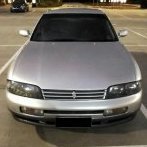Any Direct Injected 300gt / 250gt V35's?
Announcements
-
Similar Content
-
Latest Posts
-
Selling due to having change over unit built with the gearset I want. In good condition, no grinding or crunching. Had 162k km’s of use. Clutch in good usable condition, has the normal heat marks, still has factory machine marks on plates. 40k km’s of use. $1800ono for both, would prefer to sell both together for the moment. Pick up from Geelong
-
I love a good HCR32! Nice colour. Also those Bluebird hubcaps suit that Wagon R down to the ground
-
Also, technically not on the street but the UGX car park,
-








Recommended Posts
Create an account or sign in to comment
You need to be a member in order to leave a comment
Create an account
Sign up for a new account in our community. It's easy!
Register a new accountSign in
Already have an account? Sign in here.
Sign In Now